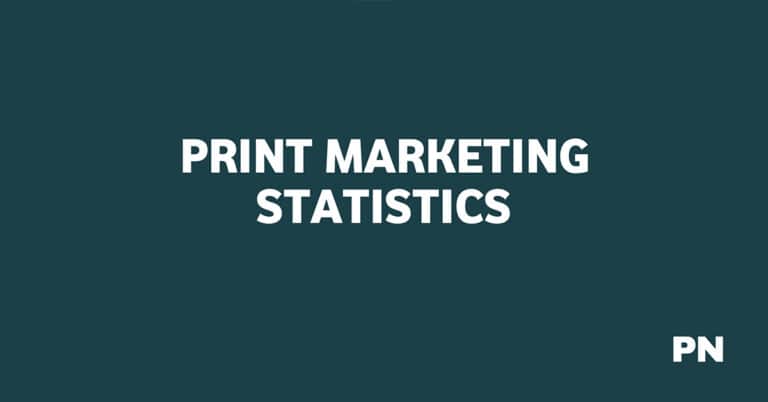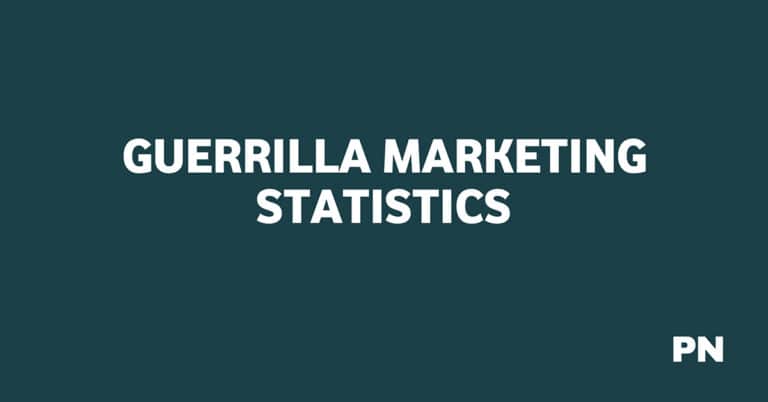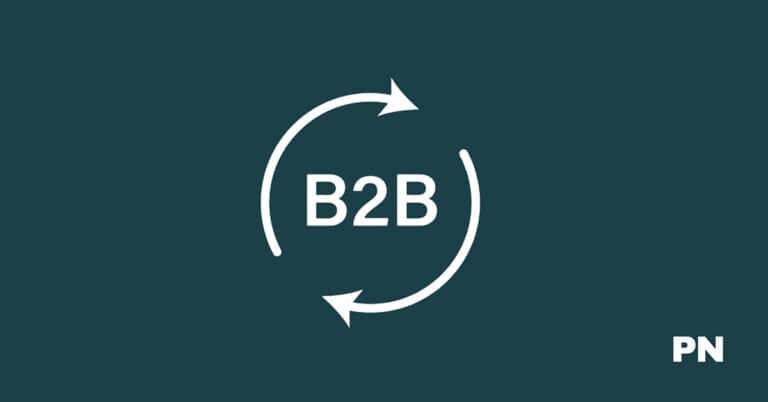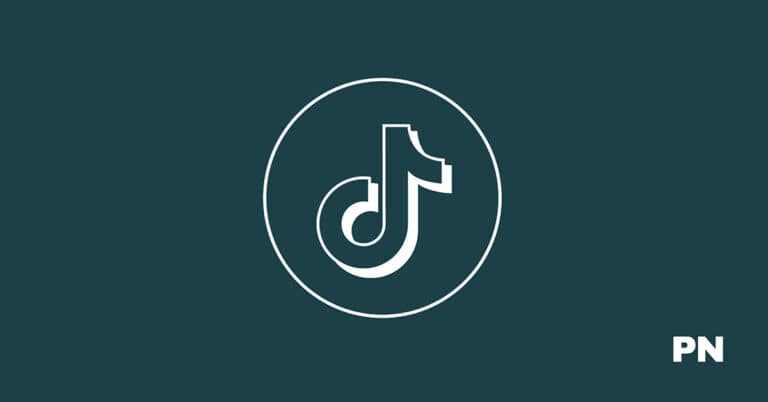41 Sales Funnel Statistics: Key Insights for 2024
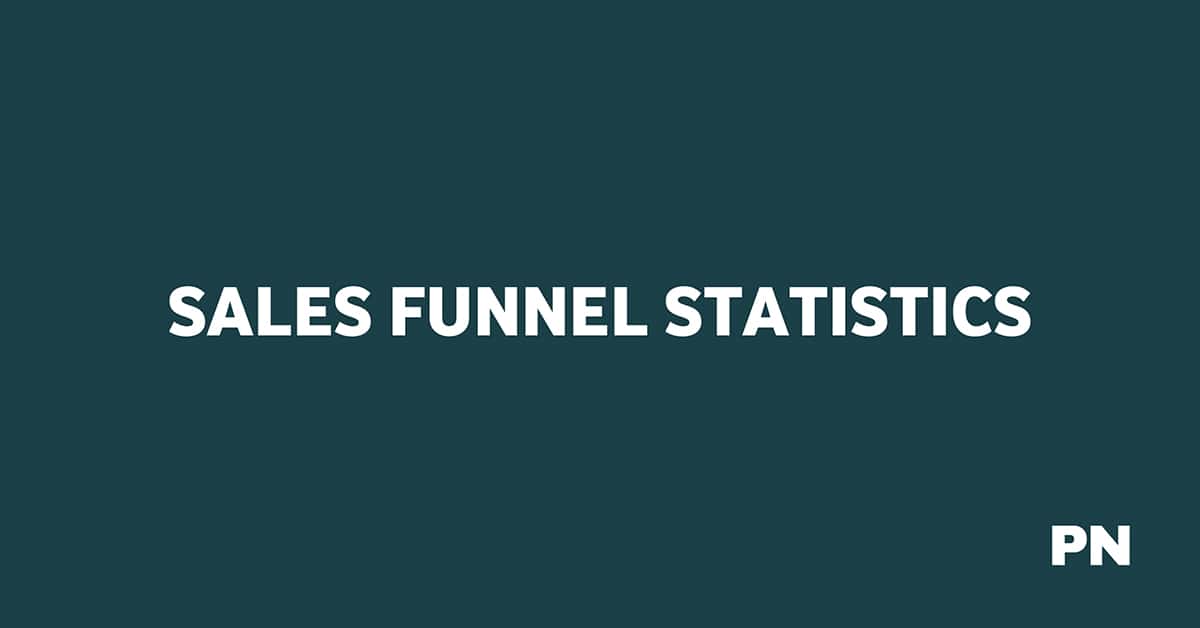
Are you looking to optimize your sales funnel? Understanding the latest sales funnel statistics can help you make informed decisions and increase conversion rates.
Did you know that 79% of marketing leads never convert into sales due to a lack of lead nurturing?
Staying up-to-date with the latest sales funnel statistics can help you fine-tune your marketing strategy and improve your bottom line.
From the importance of lead nurturing to the benefits of upselling, these statistics offer valuable insights into the sales funnel process. Keep reading to discover the latest trends and key takeaways for optimizing your sales funnel.
1. 68% of Companies Have Not Yet Identified, Designed, or Measured Their Sales Funnel
(Source: Salesforce)
You might have heard about sales funnels if you’re running a business. A sales funnel visually represents a customer’s journey from prospect to paying customer. It is an essential tool for businesses to understand their customers’ behavior and optimize their sales process.
However, according to recent statistics, 68% of companies have not yet identified, designed, or measured their sales funnel.
This means many businesses are missing out on the benefits of a sales funnel. Without a sales funnel, businesses cannot identify the gaps in their sales process and make improvements to increase their revenue.
You need to take action to avoid joining the 68% of companies that have not yet identified, designed, or measured their sales funnel. Start by mapping out your sales process and identifying your customers’ stages. Once you have a clear picture of your sales funnel, you can optimize it to increase your revenue and improve your customer experience.
2. 67% of businesses use lead nurturing to drive their sales funnel.
(Source: LinkedIn)
Lead nurturing is a crucial aspect of any successful sales funnel. It involves building relationships with potential customers and guiding them through buying.
According to recent statistics, 67% of businesses use lead nurturing to drive their sales funnel. More than half of businesses recognize the importance of building relationships with their customers and guiding them through buying.
Lead nurturing can take many forms, including email campaigns, targeted content, and personalized outreach. By nurturing leads, businesses can increase their chances of converting them into customers. 79% of marketing leads never convert into sales due to a lack of lead nurturing.
A well-defined sales funnel can lead to a 16% higher deal win rate.
By incorporating lead nurturing into your sales funnel, you can increase your chances of closing deals and growing your business. So, if you haven’t already, it’s time to start nurturing your leads and guiding them through the buying process.
3. 79% of marketing leads never convert into sales due to a lack of lead nurturing.
(Source: Marketing Sherpa)
When leads are not nurtured, they may lose interest in your product or service or forget about your company.
By establishing a system for nurturing leads, you can keep your company at the forefront of their minds and increase the likelihood of converting them into customers.
A well-designed lead nurturing system can produce a 20% increase in sales opportunities compared to non-nurtured leads. Thus, by investing in lead nurturing, you can significantly increase your chances of closing deals.
4. A well-defined sales funnel can lead to a 16% higher deal win rate.
(Source: ZipDo)
A well-defined sales funnel can significantly impact your business’s deal win rate.
According to ZipDo, a well-defined sales funnel can lead to a 16% higher deal win rate. A well-prepared funnel can be a bright lightbulb for your strategic thinking.
It’s important to note that a well-defined sales funnel is not a one-time process. Regular analysis and optimization are required to ensure the plan is effective and aligned with your business goals. By analyzing your funnel regularly, you can gain deep insights into data and implement optimization processes to improve your deal win rate.
5. 75% of consumers click on the top three search results, emphasizing the importance of having a well-optimized sales funnel to capture leads.
(Source: WebFX)
You may miss out on many potential customers if your website is not among the top three search results.
To ensure that your sales funnel is well-optimized, you should improve your website’s search engine optimization (SEO) strategies. This includes using relevant keywords, creating quality content, and optimizing your website’s structure and design.
Another important factor in optimizing your sales funnel is ensuring your website is user-friendly and easy to navigate. Your website should load quickly, have clear calls to action, and be mobile-friendly.
6. Connecting with a buyer takes an average of 18 calls, highlighting the importance of persistence and follow-up in the sales funnel process.
(Source: Gartner)
Connecting with a buyer is one of the most crucial steps in the sales funnel process.
However, getting in touch with a potential customer is not always easy. According to recent sales funnel statistics, connecting with a buyer takes 18 calls. This highlights the importance of persistence and follow-up in the sales funnel process.
When connecting with buyers, remember they’re likely busy and may not have time to respond immediately. This is why it’s important to be persistent and follow up with them multiple times. Doing so increases the chances of getting in touch with them and moving them further down the sales funnel.
One way to make the follow-up process easier is to use a CRM system. A CRM system can help you keep track of all your interactions with a potential customer, making it easier to follow up with them and stay top-of-mind.
7. A 10% increase in lead quality can translate to a 40% increase in sales productivity.
(Source: Marketo)
Improving lead quality is a critical aspect of increasing sales productivity. The quality of leads determines how many will be converted into paying customers.
According to recent studies, a 10% increase in lead quality can lead to a 40% increase in sales productivity. This means that you can increase your sales by focusing on improving the quality of your leads.
One way to improve lead quality is by creating targeted content that appeals to your ideal customers. This content should be tailored to your target audience’s specific needs and pain points. You can also use data analytics to track the behavior of your leads and identify patterns that will help you better understand their needs.
8. 96% of website visitors are not ready to buy and need nurturing through the sales funnel.
(Source: HubSpot)
When visitors land on your website, they are not always ready to make a purchase.
According to recent sales funnel statistics, 96% of them are not ready to buy. You must nurture these leads through the sales funnel to convert them into paying customers.
Lead nurturing builds relationships with potential customers by providing relevant and valuable information. It helps keep your brand in mind and build trust with your audience. By nurturing leads, you can increase the likelihood of converting them into paying customers.
9. Companies with well-defined sales and marketing-aligned funnels see a 36% higher customer retention rate.
(Source: HubSpot)
One of the most important aspects of a successful sales funnel is aligning your sales and marketing efforts to increase customers’ likelihood of staying with your company.
To achieve this alignment, it’s important to understand your target audience and their needs. Creating targeted marketing campaigns that speak directly to your audience can attract the right customers to your business.
Once these customers are in your sales funnel, it’s important to continue to provide them with valuable content and personalized experiences to keep them engaged and interested in your products or services.
10. Personalizing your content can increase the overall effectiveness of the sales funnel by up to 20%.
(Source: ZipDo)
Personalizing your content is a powerful way to increase the effectiveness of your sales funnel. By tailoring your content to your target audience’s needs and interests, you can create a more engaging and compelling experience that drives conversions.
According to recent studies, personalizing your content can increase the overall effectiveness of the sales funnel by up to 20%.
This means that by taking the time to understand your audience and create content that speaks directly to them, you can significantly improve your conversion rates and drive more revenue for your business.
To personalize your content effectively, you must first understand your target audience. This means gathering data on their demographics, interests, behaviors, and pain points. Once you have this information, you can create content that speaks directly to their needs and interests.
11. Conversion rates for sales funnels decrease by 50% as the number of required form fields increases from four to eight.
If you want to optimize your sales funnel for maximum conversions, keeping your forms as short and simple as possible is important. Only ask for the information you need, and avoid including any unnecessary fields that could turn potential customers off.
In addition to reducing the number of form fields, it’s also important to ensure that your forms are easy to fill out. Use clear and concise language, and ensure the form is easy to navigate and understand.
12. Upselling can help increase revenue in the final stage of a sales funnel by 10-30% on average.
(Source: VWO Blog)
Upselling is a sales technique that involves selling a more expensive product or service to a customer already making a purchase. This technique is often used in the final stage of a sales funnel when the customer is ready to purchase.
By offering the customer an upgrade or an add-on, you can increase the value of the sale and, consequently, your revenue.
To be successful with upselling, it’s important to understand your customer’s needs and preferences. You should also be able to explain the benefits of the upgrade or add-on clearly and concisely.
Keep in mind that upselling should always be done in a way that benefits the customer. If the customer feels like they are being pressured or pushed into making a purchase, they may become less likely to do business with you in the future.
13. Companies that use digital platforms to manage their sales funnel perform 17% better in follow-up than companies with manual processes.
This means that digital platforms can help you increase your chances of success.
Digital platforms provide a more efficient and streamlined process for managing your sales funnel.
With digital platforms, you can easily track your leads, automate your follow-up process, and ensure no lead falls through the cracks. This can help you save time and resources, increasing your chances of converting leads into customers.
Some popular digital platforms for managing sales funnels include GoHighLevel, Systeme.io, Kartra, and ClickFunnels. These platforms offer a range of features that can help you build and manage your sales funnel, including funnel builders, autoresponders, and business automation tools.
14. The average length of a B2B sales cycle is 84 days, with a high-performing sales funnel assisting in shortening this process.
(Source: Monday)
Regarding B2B sales, the sales cycle length can be critical in closing deals and generating revenue.
However, it’s important to note that a high-performing sales funnel can help shorten this process. By optimizing each stage of the funnel and providing prospects with the right information and resources at the right time, you can move them through the sales cycle more quickly and efficiently.
Some key strategies for shortening the B2B sales cycle include:
- Providing personalized content and messaging that addresses each prospect’s specific needs and pain points.
- Offering free trials, demos, and consultations to help prospects experience your product or service firsthand.
- Streamlining the sales process using automation tools and technologies eliminates unnecessary steps and reduces friction.
15. The Sales Closing Rate for Businesses with an Effective Sales Funnel is 6 Times Higher than the Industry Average.
(Source: Forbes)
Businesses with a well-structured sales funnel are likelier to convert leads into customers.
To achieve an effective sales funnel, businesses must ensure that they have a clear understanding of their target audience and tailor their sales funnel to meet their needs. It is also essential to have a well-designed landing page that captures the attention of potential customers and encourages them to take action.
Businesses can optimize their sales funnels using various tools, such as email marketing, social media, and analytics. By analyzing the data from these tools, businesses can identify areas for improvement and make necessary changes to their sales funnels.
16. A 2018 survey by Hubspot revealed that only 69% of marketers feel their top priority should be converting leads into customers.
(Source: Hubspot)
The survey also revealed that lead generation and traffic growth were the top priorities for many marketers. While these are important aspects of any sales funnel, the ultimate goal should be converting leads into customers.
All the efforts put into lead generation and traffic growth would be wasted without conversions.
17. According to a survey, 3.1%-5% is a good funnel conversion rate for most online businesses.
(Source: KhrisDigital)
One of the most important metrics to consider when measuring your sales funnel’s success is your conversion rate. A survey shows that most online businesses have a good funnel conversion rate between 3.1% and 5%.
This means that out of every 100 people who enter your sales funnel, between 3 and 5 will become paying customers.
Of course, it’s important to remember that every business is different, and what works for one may not work for another. Your conversion rate will depend on various factors, including your industry, your target audience, and the quality of your sales funnel.
18. 79% of leads acquired do not reach the conversion stage and are never converted to sales.
(Source: Marketing Sherpa)
This is a significant number that can be attributed to various reasons, but one of the most common is a lack of lead nurturing.
Lead nurturing is building relationships with potential customers at every sales funnel stage.
It involves providing relevant and valuable information to prospects to help them move closer to making a purchase. When done correctly, lead nurturing can significantly improve conversion rates.
Another reason leads fail to convert is that they are not a good fit for the offered product or service. This can be due to various factors, including a lack of understanding of the target audience or poor lead-generation strategies.
19. On average, 70-95% of revenue comes from funnel upsells and renewals (for businesses that use them).
(Source: SUMO)
If you’re not currently utilizing these tactics, you could be wasting significant money.
Upsells are powerful tools for increasing your customers’ average order value.
Offering additional products or services that complement their original purchase can increase the overall value of their transaction. Renewals, on the other hand, are a way to keep customers coming back for more. By providing ongoing value and support, you can build a loyal customer base that continues to generate revenue over time.
20. 55% of businesses say articles and blog posts are the most productive way to bring potential customers down the sales funnel and pipeline.
(Source: KhrisDigital)
Content marketing is an effective way to engage and educate your target audience. By providing valuable content that addresses their problems, you can build trust and establish yourself as an authority in your industry.
This, in turn, can lead to increased conversions and sales.
To make your articles and blog posts more effective, you should focus on creating high-quality content that is relevant and valuable to your target audience. Use a variety of formats, such as lists, tables, and infographics, to make your content more engaging and easier to read.
21. 95% of customers choose to purchase from a vendor that provides content that addresses their problem because it helps them navigate each stage of the buyer journey.
(Source: Demand Gen Report)
To effectively provide content that resonates with your customers, businesses must first understand their pain points and challenges.
This requires a deep understanding of your target audience and their needs. Once you have identified your audience, you can create content that speaks to their needs and guides them through each stage of the buyer journey.
22. 45% of online sales processes are complex.
(Source: VML)
Online sales processes can be complex and have many moving parts, and it’s not uncommon for businesses to struggle with creating a streamlined process that converts visitors into paying customers.
It’s important to simplify your sales process as much as possible to overcome this challenge.
This can involve streamlining your website design, optimizing your checkout process, and creating clear and concise messaging that communicates the value of your products or services.
23. 96% of Visitors That Come to Your Website or Front Sales Pipeline Are Not Ready to Buy
(Source: Marketo)
One effective way to guide visitors through the sales funnel is to create an easy buying process. Companies that create a simple and easy buying process for visitors are 62% more likely to win a high-quality sale.
This means you should create a seamless and easy-to-use website or sales pipeline that guides visitors through the buying process step-by-step.
Another effective way to guide visitors through the sales funnel is to use lead nurturing techniques. You can turn visitors into prospective customers by nurturing leads before they bounce.
24. In 2022, less than 1% of online business owners generated over a million dollars using a single sales funnel.
(Source: ClickFunnels)
Russell Brunson revealed that in 2022, less than 1% of online business owners generated over a million dollars using a single sales funnel built with ClickFunnels. This highlights the importance of a well-defined sales funnel in helping businesses achieve revenue goals.
25. Companies that create an easy buying process for visitors are 62% more likely to win a high-quality sale.
This means that simplifying the buying process can increase your chances of making a sale and the quality of the sale.
To facilitate the buying process, your website must be user-friendly and easy to navigate. You should also provide clear and concise information about your products or services, including pricing and features.
This will help your visitors make an informed decision and feel confident about their purchase.
Another important factor is ensuring your checkout process is quick and easy. This means minimizing the steps required to purchase and providing multiple payment options. Doing so can reduce cart abandonment rates and increase your conversion rates.
26. The first vendor who responds to customers makes 30-50% of sales.
If you’re in sales, you know that time is of the essence when responding to customer inquiries.
To ensure that you’re not missing out on sales, it’s important to have a system in place to respond to inquiries quickly. This could involve setting up automated responses or having a dedicated sales team member responsible for responding to inquiries promptly.
27. Nurtured leads make 47% larger purchases than non-nurtured leads.
(Source: Invespcro)
This is because lead nurturing helps build trust and credibility with potential customers, making them more likely to purchase.
To effectively nurture leads, it’s important to understand their needs and preferences.
This can be achieved through targeted content and personalized communication. For example, sending personalized emails that address a potential customer’s specific pain points can go a long way toward building trust and establishing a relationship.
Lead nurturing can increase the likelihood of a sale, customer loyalty, and repeat business. By staying in touch with customers and providing them with valuable information and resources, you can create a loyal customer base that will continue doing business with you.
28. Long-form landing pages in funnels can generate up to 220% more leads.
Over time, it’s been proven that long-form landing pages can be particularly effective.
By providing more information and building trust with your potential customers, you can increase the likelihood of them converting into paying customers. However, it’s important to keep the content on your landing page relevant and engaging to avoid overwhelming visitors with too much information.
29. 65% of businesses say generating traffic and leads is their biggest marketing challenge.
(Source: HubSpot)
To tackle this challenge, businesses must create quality content and optimize their website for search engines. Doing so can attract potential customers who are actively searching for their products or services.
Businesses can also use lead magnets such as free trials, e-books, and webinars to capture potential customers’ contact information and nurture them through the sales funnel.
30. Targeting and testing correctly can boost conversions by 300% or more.
(Source: Marketingexperiments)
This means that by making simple adjustments to your funnel, you can triple your revenue with the same amount of traffic.
You must understand your target audience and create a funnel that speaks to them to achieve this.
You can use tools like Google Analytics and Facebook Insights to gather data about your audience and create buyer personas. Once you understand your audience, you can create a funnel that addresses their pain points and provides solutions.
Testing is also crucial to optimize your funnel.
You can use A/B testing to compare different versions of your funnel and see which one performs better. This lets you make data-driven decisions and improve your funnel based on real results.
31. 65% of companies have no defined lead nurturing process or toolset.
(Source: LinkedIn)
Establishing a lead nurturing process is essential for businesses that want to succeed in their lead generation campaigns.
It involves identifying the needs of your potential customers and delivering personalized content that addresses those needs. Doing so can build trust and credibility with your leads, ultimately increasing sales and revenue.
32. 74% of companies say converting leads into customers is their top priority.
(Source: Smallbizgenius)
Lead nurturing is an important aspect of the sales funnel. It involves building relationships with potential customers and providing them with valuable information.
This helps to build trust and credibility, making it easier to convert leads into customers. Companies that prioritize lead nurturing are more likely to convert leads into customers.
33. Only 29% of brands nurture their existing customers beyond the initial purchase.
(Source: DemandGen)
Most brands are missing out on potential revenue and customer loyalty.
By nurturing existing customers, you can increase their lifetime value and encourage them to make repeat purchases. This can be done through personalized emails, exclusive offers, and excellent customer service. It’s important to remember that nurturing your existing customers is as important as acquiring new ones.
To effectively nurture your existing customers, you must have a solid understanding of your customer base, including their needs, preferences, and behavior. Segmenting your customers and tailoring your approach to each group can improve your chances of success.
34. 57% of marketers say lead nurturing is the most valuable feature of automation software.
(Source: Marketo)
Marketing automation tools can help you automate your marketing activities and save time while providing personalized experiences for your leads. You can use these tools to create targeted and relevant content for your leads, send automated emails, and track their behavior on your website.
By nurturing your leads, you can increase their engagement with your brand and improve their chances of becoming paying customers. It’s important to remember that lead nurturing is a long-term process that requires patience and consistency.
35. Upsells are 68% more affordable than acquiring a brand-new customer.
(Source: SUMO)
To effectively upsell, businesses should offer products that complement the customer’s purchase.
For example, if a customer purchases a laptop, the business can offer a laptop bag or a mouse as an upsell. Ensuring that the upsell adds value to the customer is also essential and is not seen as a pushy sales tactic.
Businesses can use various techniques to upsell, such as offering a discount for purchasing both the original product and the upsell or highlighting the benefits of the upsell. However, balancing upselling and respecting the customer’s decision is crucial.
36. 80% of business professionals believe email marketing increases customer retention.
Email marketing is a great way to acquire new customers and a powerful tool for keeping your existing customers engaged and loyal.
Email marketing can help you keep your brand top-of-mind regarding customer retention.
By sending regular newsletters, promotional emails, and other types of content, you can stay in touch with your customers and remind them of your brand’s value. Additionally, email marketing can help you build relationships with your customers by providing them with personalized content and offers.
37. 37% of marketers claim that prospecting is the hardest part of their jobs.
(Source: HubSpot)
Prospecting is crucial to the sales funnel process but can be the most challenging.
To make the process of prospecting easier, it’s essential to have a clear understanding of your target audience and their needs.
This can be achieved through market research, competitor analysis, and customer feedback. Once you understand your target audience, you can create a targeted marketing campaign to attract the right leads and help move them through the sales funnel.
38. 96% of visitors are not ready to buy, while 95% of buyers choose a business with sufficient content.
To capitalize on these statistics, it’s important to create a comprehensive sales funnel that includes lead generation and lead nurturing strategies. This might include creating targeted landing pages, offering lead magnets, and sending targeted email campaigns to move visitors through your funnel.
39. 30% of businesses surveyed agree that a conversion rate between 3.1% and 5% is a good range for sales funnel conversion rates.
It is important to note that the conversion rate can vary depending on the industry, the product or service being sold, and the target audience.
However, having a conversion rate within this range is generally considered a good benchmark for most online businesses.
To achieve this conversion rate, businesses must optimize their landing pages, improve their lead generation strategies, and create compelling content that resonates with their target audience.
40. Desktop Users Convert at Almost 2 Times the Rate of Mobile Users (3.8%), with an Average Desktop Conversion Rate of 6.7%.
One reason for this difference in conversion rates could be that desktop users tend to have a larger screen and more time to browse and make a purchase decision.
Additionally, desktop users may feel more comfortable making purchases on a larger screen and may have more trust in the security of their desktop devices.
Consider optimizing your website for desktop users to improve your sales funnel conversion rates. This could include improving the user experience for desktop users, optimizing your website for larger screens, and focusing on desktop-specific marketing strategies.
41. At least 570,000 websites use at least one sales funnel-building software.
(Source: Builtwith)
Sales funnel-building technology has become more popular recently, with many businesses adopting it to improve their sales and marketing strategies.
This indicates that sales funnel-building technology has become essential for businesses to increase conversion rates and revenue.
ClickFunnels is the most popular sales funnel-building tool, taking almost 55% of the market share. Other popular sales funnel builders include Kartra, GoHighLevel, Builderall, and many more. These tools allow businesses to create high-converting sales funnels that can help them generate more leads and sales.
Frequently Asked Questions
What percentage of leads typically convert at each stage of the sales funnel?
According to recent studies, the average conversion rate of leads at each stage of the sales funnel is as follows: 20-30% for the awareness stage, 5-10% for the interest stage, 3-5% for the decision stage, and 1-3% for the action stage. However, these numbers can vary depending on the industry, target audience, and the effectiveness of the sales funnel itself.
How have conversion rates at different sales funnel stages changed over time?
Over the years, conversion rates at different sales funnel stages have fluctuated due to changes in consumer behavior and market conditions. For example, the COVID-19 pandemic has caused significant changes in consumer behavior, leading to changes in conversion rates.
What are the average drop-off rates for each stage of the sales funnel?
The average drop-off rates for each sales funnel stage can vary depending on the industry and target audience. However, studies have shown that the average drop-off rates are around 20-30% for the awareness stage, 60-70% for the interest stage, 80-90% for the decision stage, and 95-99% for the action stage.
Which factors most significantly impact sales funnel effectiveness?
Several factors can significantly impact sales funnel effectiveness, including the quality of leads, the relevance of the content, the ease of navigation, the speed of the website, and the level of personalization.
How do different industries compare in terms of sales funnel efficiency?
Different industries can have varying levels of efficiency when it comes to their sales funnel. For example, industries such as e-commerce and SaaS tend to have higher conversion rates due to their streamlined sales processes. On the other hand, industries such as healthcare and finance may have lower conversion rates due to the complexity of their products and services.
What are the best practices for optimizing a sales funnel in the current market?
To optimize a sales funnel in the current market, businesses should focus on providing high-quality content relevant to their target audience, optimizing their website for speed and ease of use, incorporating personalization strategies, and leveraging technology such as AI and machine learning.
Final Thoughts on Sales Funnel Stats
These sales funnel statistics are essential in helping businesses optimize their marketing strategies. By understanding the average conversion rates and other metrics, you can identify areas for improvement and take action to increase your sales.
One important takeaway from the statistics is the significance of upsells and renewals. On average, 70-95% of revenue comes from these sources, highlighting the importance of creating a seamless customer experience and building long-term customer relationships.
Another crucial aspect to consider is the role of content in driving conversions. Web pages showcasing social proof have an average conversion rate of 12.50%, emphasizing the importance of creating engaging and informative content that resonates with your target audience.
Notably, not all leads will convert to sales, with 79% of acquired leads failing to reach the conversion stage. This highlights the importance of nurturing leads and providing them with relevant information and support throughout the customer journey.
Disclosure: We may earn commissions if you buy via links on our website. Commissions don’t affect our opinions or evaluations. We’re also an independent affiliate of many platforms, including ClickFunnels, Kartra, GoHighLevel, Podia, Northwest Registered Agent, and others. We’re not employees of these services. We receive referral payments from them, and the opinions expressed here are our own and are not official statements of these companies.
